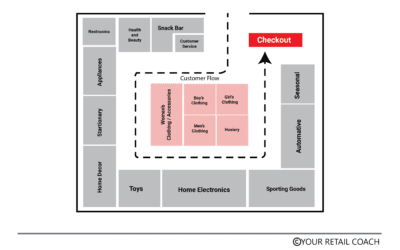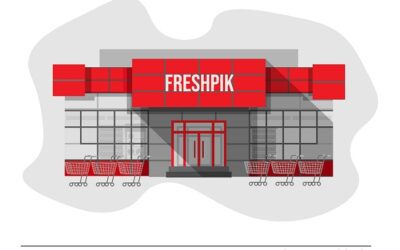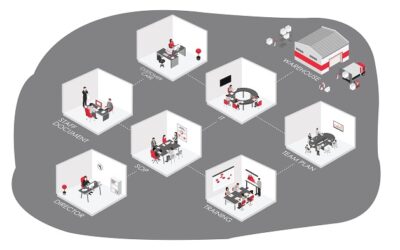Co-Living & Co-Working
Gaps in Urban Living and Working
Living and working are two fundamental necessities of life. For studies and careers or work and occupation, it is common for people to move out of their homes and hometowns or move to new places. For students, most of the headache is addressed by their guardians including covering for their finances. But for millions of working professionals around the world, shifting bases is not an easy thing. Their organisations, universities, or clients may not provide them with living solutions. On top of that, moving to a new city comes with other challenges as well. The challenges include finding rooms and apartments, customising the place of stay, setting up a kitchen, streamlining grocery purchases, finding laundry and housekeeping services, etc. This is where co-living comes into the picture.
Conventionally, offices are the physical places where people go and deliver their services (work). As the world becomes a bigger and wider place in terms of business and economics, the need for the services of people and value chain entities has also increased. New startups are mushrooming – playing one role or the other in the value and supply chains of multiple industries and sectors. This is also true for independently working professionals whose services are hired by organisations. These organisations and professionals then require office space to work from. This is while technology has made it feasible and commercially sustainable to maintain remote workforces and work remotely. Where will the space to accommodate the emerging spatial requirements for setting up offices come from? On the other hand, spiralling real-estate prices make it challenging for MSMEs and independent professionals to set up offices. All these factors combined have created a gap as to wherefrom the exchange of services takes place. Co-working knocks here.
What is Co-Living?
Think of co-living as hostels for rent with built-in home-like infrastructure for ease and convenience. Co-living service providers deliver a comprehensive service package where occupants get an extensively-furnished space. Generally, in one co-living unit (a flat or apartment or set of rooms), multiple occupants live together and pay separately on a per-person basis charged by the service provider. They get separate rooms with common kitchens, halls, television, internet, etc. Here is a list of assets and services commonly found in co-living arrangements:
- Multiple numbers of rooms with or without air-conditioning
- Electricity and water supply
- Common hall, television, music system, gaming consoles
- Furnished kitchens with accessories, dishwasher
- Restrooms, washing machine and dryer
- Housekeeping services
- Wi-Fi internet
- Doorman services
- Community events
- CCTV surveillance
Co-living can include more assets and services depending on what a service provider chooses to offer. As per the offerings, the rental, charges, and security deposit requirements go up or vary.
One of the most valuable outcomes of the co-living industry is the emergence of co-living solutions for senior citizens. This is not to be confused with old-age homes where the residents may need medical care and attention and/or extensive support systems.
What is Co-Working?
Think of co-working as clubs or gyms but for work. In normal clubs, people go for leisure and entertainment purposes but in co-working, people go for work. In gyms, people go for workouts but in co-working, people go for work. It is a common space for all with the fundamental assets and services required for work. People can go as individuals or in groups and use the setup to do their work. The service providers charge fees for the same. Here are some of the commonly found services in co-working arrangements:
- Fully-furnished office space
- Air-Conditioning
- Coffee and refreshment
- Restrooms
- Individual workstations
- Meeting/conference rooms
- Private offices
- Wi-Fi Internet
- Security, CCTV surveillance
Like in co-living, different co-working service providers offer different work setup services and solutions to individuals as well as enterprises. However, co-working is relatively a much simpler concept than that of co-living.
Similarities between Co-Living & Co-Working
- Ready-made solutions for living and working
- Shared Economy, Shared Costs
- Driven by the essence of community-based principles and advantages
- An opportunity to live or work with people from the same profession
- Meeting point of professionals from diverse specialisations within or beyond one field
- Charges as per offerings availed
- Open to students, employed, self-employed, freelancers, businessmen and independent professionals in groups or as individuals
- Makes it easy to quickly find living solutions and a physical place to work
- Both are proven business models and complement one another
Differences between Co-Living & Co-Working
- Co-living is a dwelling solution while co-working is a workspace and setup solution
- Depending on the region, laws may be more stringent in the case of co-living
- Co-working places may be governed by stipulated working hours
- Co-living has a greater bearing on the personal-transactional lives of the occupants; co-working, by default, keeps the personal lives of the co-workers separate from work
Business Challenges in Co-Living & Co-Working
Market Understanding and Product Design Requirements: Co-living and co-working are two evolving industries. They flourish in modern cities with high urbanisation, educational hubs, high employment opportunities, a large working class, business centres, and any other hallmark of a big and growing city. However, the mere presence of these factors does not translate into market potential or make it easier to identify the right target segments. Local and prevailing cultural and traditional factors play a big role in deciphering whether or not modern concepts like co-living will be accepted. In the case of co-working, the equation is more about how well-connected and aligned a city is in terms of employment, business, and trade and commerce with the rest of the country or the world. The business models and product designs depend on these and other related market factors.
Commercial and Financial Sustainability: Starting a co-living and co-working business calls for high initial investments and operating expenditure if starting from scratch. Major expense heads applicable are the purchase of land and buildings and the purchase of fixed assets. Then there are operating costs like lease and rental charges, housekeeping, asset maintenance, electricity bills, water supply, etc. Running a co-living and co-working business is almost like running a multi-starred platform for living and working as the case may be. Not making the necessary numerical assessments can jeopardise a business on its commercial and financial fronts.
Streamlining Processes and Operations: As said earlier, running a co-living or co-working business is almost like running a multi-starred platform for living or working. Parallels can be drawn with hotel management but for living or working purposes. Various important operations include housekeeping, asset maintenance, IT support, check-in and check-out, reservations, safety and security, electricity and power, accounts and finance, HR and admin, and inventory management. Each of these operations will have its unique requirements and standards aligned to business goals and coordinated with other business processes. Streamlining business processes and operations in co-living and co-working businesses is a massive and complicated task that calls for a professional approach. Even a small deviation in operations planning could adversely affect services and customer experience.
Establishing a Brand Identity and Maintaining Brand Consistency: As co-living and co-working are new concepts and competition levels may not yet be harsh everywhere, setting a brand identity already has many inherent challenges. In branding efforts, the need is to convey the message of value or utility of what a brand has to offer. Both co-living and co-working offer ‘space to live or work’ which is universal. The challenge for businesses here is to convey what they stand for within those brackets.
In co-living and co-working, consistency in branding is maintained when consistency in services is maintained. As business and operations expand, maintaining consistency in the services keeps on getting more challenging. Without robust operations planning, it would only be a matter of days before the cracks in the functioning begin to show up.
Achieving Space Optimisation: In both co-living and co-working, space optimisation is important for some common as well as unique reasons. The foremost necessity comes from the scarcity of space. Making the best possible use of the available space could mean more space to accommodate more customers without compromising on visuals and functionalities. Apart from commercial benefits, layout planning is also instrumental in lending speed and accuracy to many important operations. The challenge here in layout planning is getting it right the first time. Once the things are set, it is difficult to change them again. Repeatedly changing the layout is neither financially ideal nor is it favourable from the perspective of customer experience.
Franchise Management: Franchising is a commonly used business expansion strategy in the co-living and co-working industry. It has brought success to many. But it is as much capable of pulling down an already successful brand. The catch in franchising is defining the rules of the game covering the roles and responsibilities of both the franchisor and the franchisee. Irrespective of the form of franchising, this principle does not change. The onus is on the franchisors to put measures in place that will safeguard their brand identity and see to it that those measures are adhered to by all stakeholders involved whether inside or outside the organisation. Without an insightful understanding of how to make franchising work, even experienced businesses have learned lessons the hard way. This applies to franchisees also as they need to secure their interests as well.
Why YRC Business Consulting?
We are a retail and eCommerce consulting enterprise with more than 11 years in business and a scaling global footprint. We have worked with 500+ clients hailing from over 20+ verticals. Our projects are handled by a team of experienced business consultants. Our services and solutions are designed following planned and proven principles and processes. In the co-living and co-working sector, startups and businesses of all sizes can avail YRC’s extensive range of services as per their unique business requirements.
Market Research
Market research is one of the fundamental requirements before starting any business. In market research, our objective is to help clients quickly gain relevant and detailed insights and analysis on an extensive list of parameters pertaining to the target markets. As co-living and co-working industries are in their nascent stages, we highly recommend that thorough market research be conducted whether outsourced or done by internal resources.
Business Model Development
In co-living and co-working business model development, we assist our clients in establishing their businesses on strong value-based fundamentals. Here, we help in identifying the right value propositions for the right customer segments. The value chain is mapped charting the best possible routes and the key activities required to develop and deliver the identified UVPs to the target segments with the help of key partners. All possible revenue streams are assessed. Major cost heads and key resource requirements are identified. The best channel options are also determined. In co-working and co-living business model development, it is important to bear in mind that these two share similitudes with hotels and service apartments.
Financial & Commercial Planning
In financial and commercial planning, we assess the numbers and statistics required to convincingly take a business idea off the ground and keep it flying. The assessments cover demand forecasting, sales and revenue projections, CAPEX and OPEX requirements, estimated P/L statements, ROI and break-even analysis, and purchase planning. These financial and commercial assessments are also central to co-living business plans or co-working business plans.
Layout Planning
One of the major concerns for businesses in the co-living and co-working industry is making the best use of the available space while maintaining the desired visual appeal and delivering superior customer experience. Our speed and expertise in layout planning help our clients quickly finalise the layout of their co-living or co-working space.
SOP Development & Implementation
SOP development & implementation assistance is one of our core competencies. We use it for defining the operational roadmaps of business processes and operations. Every process is defined with high levels of detailing. The workflows are mapped for every process. The standards of input and output are established for every task and every process. Coordination among all business processes is ensured. SOP-IT integration is done.
Franchise Consulting
Franchise consulting is an important part of our co-living and co-working business solutions. In franchise consulting, we help define the key strategies, prepare the financial and commercial forecasts, support in franchise partner search, draft the franchise agreements, design and develop franchise SOP manuals, and define the franchise audit processes. In a nutshell, YRC offers an extensive range of services involved in franchising a business.
To know more about our co-working and co-living business solutions or to speak to one of our expert business consultants, please drop us a message and we will reach out to you.
FAQs
How do I Start a co-working Space Business?
Co-working is a relatively new concept that makes it treading in uncharted waters even for the veterans. Fortunately, the fundamentals of starting a business do not undergo any major change. Here are some key considerations for starting a co-working space:
- Market Research – Regulations, competition, demand, gaps, market size, targetable segments, consumer behaviour, pricing, dominant values and cultural factors, etc.
- Business Model Development – Value proposition, value chain and key activities, key resources and capabilities, key partners, revenue streams, major costs, etc.
- Financial and Commercial Planning – Demand forecasts, revenue projections, CAPEX & OPEX requirements, ROI and breakeven, etc.
- Operations Planning – SOPs, IT and process automation, SOP-IT integration, etc.
- Layout Planning – Visual appeal, space optimisation, revenue maximisation, etc.
6. Hiring and Training Strategy – Emphasis on job as well as industry-specific skills and competencies aided by relevant training and development
Is co-working a Profitable Business?
Co-working is a new business concept. Many challenges in this business are also new and there is very little we know about them. Before starting a co-working space and expecting it to be profitable, it is important to conduct thorough market research and prepare the financial and commercial assessments and projections.
How do I Grow my co-working Business?
There is no simple answer to this question. The following approaches can be considered.
We should assess the impact of the marketing and promotional efforts keeping customer acquisition in measurable terms. If these are not effective, we must re-work on them.
Growth and expansion can also be achieved by increasing the capacity to handle more customers. In co-working, acquiring or developing additional space to accommodate more customers can solve the problem.
Adding new or premium services in the offing also helps attract more customer segments and increase revenue.
Location is also a constraint sometimes. Co-working can consider exploring new markets or localities for opening new branches.
Done right, franchising can also prove to be a masterstroke to achieve business growth and expansion.
Any growth and expansion move must be carried out with proper planning and due adherence to all relevant and applicable factors.
How do I Market my co-living Business?
Good service is the best form of promotion. Here are some add-ons for consideration:
Approach corporates and educational institutions for brand promotion
Tie up with corporates for co-living solutions to their employees
Encourage customers to share their positive reviews on the business’s website and social media handles
Address critical reviews in a positive and constructive manner on digital platforms
Invite testimonials from customers who are also well-known personalities
Add quality content in the form of photographs and videos of business locations and services on business websites and social media handles
Let’s Talk!
Related Blogs
Retail Store Layout Strategy: What to Consider and How to Plan
Why Store Layout Matters in Retail The layout of a retail store carries several internal and external business implications. Layout is an important physical aspect of branding efforts. It creates an opportunity to create the desired atmosphere in stores thereby...
Reliance Gourmet Supermarket – “Freshpik” Case Study
The fifth-largest and preferred retail destination globally, the Indian retail industry is one of the fastest-growing segments in the world. India is experiencing unprecedented growth with retail development taking place not just in major cities and metros, but also...
How to Organize & Grow Supermarket / Hypermarket
Already running a supermarket store and wondering how to scale it further? Are you contemplating what should be your next steps to accomplish your vision to organize and manage multiple stores? If this is what you are looking for, then you are in the right place. Your...





We work only for Visionaries.